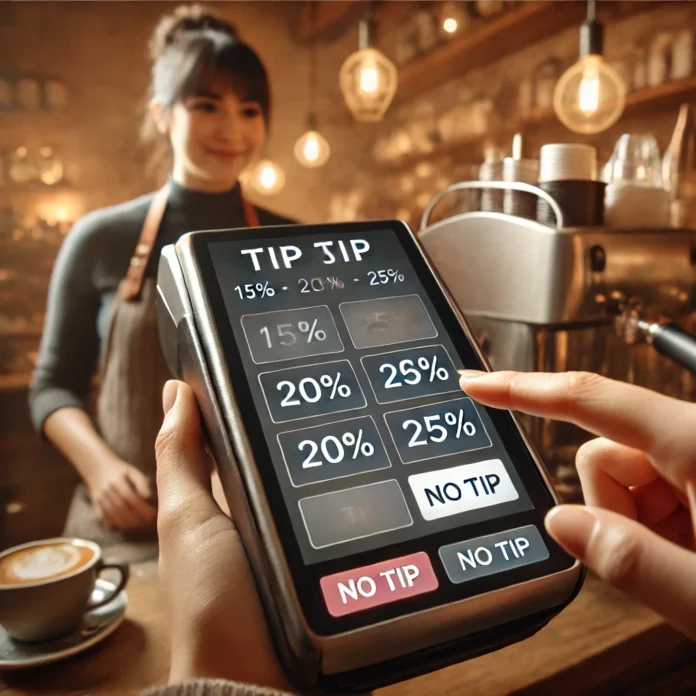What Could be a Tip Screen?
Ever walked into a coffee shop, gotten your latte, and after that gone up against a sparkling screen asking in case you’d like to tip 15%, 20%, or 25%? Thatâs a tip screen! These advanced interfacing have supplanted conventional tip containers and are popping up all over, from cafés to taxi administrations. But what precisely is their reason, and how do they work? Letâs plunge in.
Understanding Tip Screens
The Purpose of a Tip Screen
Tip screens make tipping consistent and empower tip for benefit specialists. Rather than bobbling for cash, clients can tap a button, including a tip in seconds. It simplifies transactions while boosting earnings for service staff.
How Tip Screens Work
Most tip screens appear after a transaction, whether on a tablet at a checkout counter or as a prompt on a mobile payment app. They usually present three tipping options, sometimes alongside a “No Tip” button—though that can be subtly hidden.
Types of Tip Screens
Digital Tip Screens
These are the most common, appearing on POS systems in coffee shops, food trucks, and salons. They allow customers to add a tip with a simple touch.
Physical Tip Screens
Some businesses use static tip screens—printed QR codes that direct customers to a digital tipping page. These are popular in cashless environments.
Mobile App-Based Tip Screens
Rideshare apps like Uber and Lyft use in-app tipping prompts after a ride, letting users tip based on service quality.
The Rise of Digital Tipping
Why Digital Tipping Is Growing
As society moves toward cashless payments, digital tipping has become a necessity. People rarely carry cash, so businesses have adapted by incorporating digital tip screens.
The Psychology Behind Tipping
Tip screens leverage social pressure and psychological cues. For illustration, when displayed with tipping choices of 15%, 20%, or 25%, numerous clients dodge the most reduced alternative, indeed on the off chance that they wouldnât regularly tip at all. Itâs a unobtrusive push toward liberality.
Benefits of Using a Tip Screen
Convenience for Customers
No need to search for coins or small bills—just tap and tip. It’s quick, easy, and fits into modern payment habits.
Increased Earnings for Service Workers
Studies show that businesses using tip screens often see a rise in gratuities. Customers tend to tip more when prompted by a digital screen rather than a physical tip jar.
Transparency in Tipping
Tip screens show customers exactly how much they’re tipping, eliminating confusion over cash transactions and ensuring workers receive their fair share.
Challenges of Tip Screens
Are Tip Screens Manipulative?
Some argue that tip screens apply unnecessary pressure. The default tip options can feel like a forced choice, making customers tip out of guilt rather than generosity.
Hidden Fees and Service Charges
In a few cases, businesses include benefit charges on best of tipping prompts, making an additional monetary burden on clients. Itâs fundamental to get it where your cash is going.
How to Implement a Tip Screen Effectively
Best Practices for Businesses
- Offer a “No Tip” option clearly, without making customers feel bad.
- Provide custom tipping amounts to avoid pressure.
- Be transparent about where tips go—directly to employees or split among staff?
Customizing Tip Options
Businesses should tailor tip suggestions based on industry standards. A coffee shop may start at 10%, while a sit-down restaurant may begin at 15%.
Conclusion: The Future of Tip Screens
Love them or hate them, tip screens are here to stay. They make tipping easier but also raise ethical questions about pressure and fairness. As digital transactions evolve, businesses and customers alike must strike a balance between convenience and choice.
FAQs
Are tip screens mandatory?
No, but they are becoming standard in many businesses. You can always choose not to tip.
Do tip screens increase tipping amounts?
Yes, studies suggest customers tip more when prompted by a digital interface.
Can customers choose not to tip on a tip screen?
Absolutely! Most screens have a “No Tip” option, though its placement might not always be obvious.
Are digital tip screens secure?
Yes, as long as they use encrypted payment methods. Always check for trusted payment providers.
What industries benefit most from tip screens?
Eateries, coffee shops, rideshare administrations, salons, and nourishment conveyance administrations see the greatest affect.

